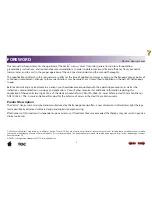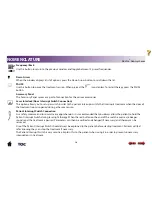
7
Intelect® Laser Module
TABLE OF CONTENTS
ABOUT LASER LIGHT THERAPY
Vectra® Genisys Laser
In short, the light energy absorbed into the patient’s tissue triggers biological changes at a cellular level to provide topical heating
for the temporary increase in local blood circulation; temporary relief of minor muscle and joint aches, pains, and stiffness; relaxation
of muscles and relief of muscle spasms; and temporary relief of minor pain and stiffness associated with arthritis. The dose and
frequency of treatment can be adjusted to produce the desired effect.
Low Level Laser Light differs from ordinary light in four ways. Briefly, it is much more intense, directional, monochromatic and
coherent. Most lasers consist of a column of active material with a partly reflecting mirror at one end and a fully reflecting mirror at
the other. The active material can be solid (ruby crystal), liquid or gas (HeNe, CO
2
etc.).
Low Level Laser Light has unique physical properties that no ordinary light has. This is the key to why laser light is so effective
compared to other kinds of light in healing. There are more than 100 double-blind positive studies confirming the clinical effect
of LLLT (Low Level Laser Therapy). More than 2500 research reports are published. The book
Laser Therapy - clinical practice and
scientific background
by Jan Tunér and Lars Hode is a good reference guide for literary documentation.
There is no exact limit with respect to the penetration of the light. The light gets weaker the further from the surface it penetrates.
There is, however, a limit at which the light intensity is so low that no biological effect of the light can be registered. This limit, where
the effect ceases, is called the greatest active depth. In addition to the factors mentioned above, this depth is also contingent on
tissue type, pigmentation, and dirt on the skin. Fat tissue is more transparent than muscle tissue.
Some laser applicators may cause a noticeable heat sensation, particularly in hairy areas and on sensitive tissues such as lips.
Common Terms
Applicator
- The hand held assembly used to deliver laser light energy. The applicator includes the laser head, diode, and related
electronics.
Collimating -
The shape of the laser light beam. While neither focused nor dispersed, this laser light beam resembles a column when
applied from the unit through the applicator.
OVERVIEW OF LASER LIGHT THERAPY











































